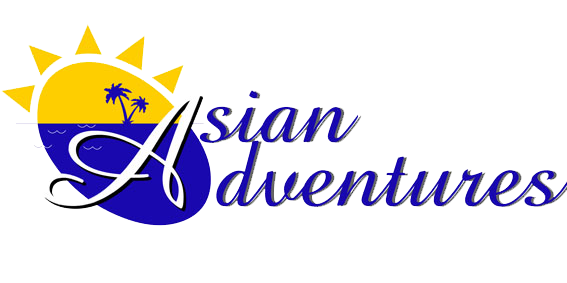About Sri Lanka
Sri Lanka, an island in the Indian Ocean is located to the south of the Indian subcontinent. It lies between 5° 55' and 9° 55' north of the equator and between the eastern longitudes 79° 42' and 81° 52'. The total land area is 65,610 sq. km. and is astonishingly varied. A length of 445 km. and breadth of 225km. encompasses beautiful tropical beaches, verdant vegetation, ancient monuments and a thousand delights to please all tastes. The relief features of the island consist of a mountainous mass somewhat south of the centre, with height exceeding 2,500meters, surrounded by broad plains. Palm fringed beaches surround the island and the sea temperature rarely falls below 27°C
Its people
Christianity and Islam were introduced to the Island in more recent times. That is what has made them a nation of tolerable and hospitable people. When you travel in the little Island you will meet friendly people; the children will wave from their doorsteps at the passing vehicle or at the visitor trekking on foot.
Languages The most commonly-spoken languages in Sri Lanka are Sinhala, Tamil and English.
The population number approximately 21 million. This multi-ethnic population comprises :
The four major religions are:
History
Recent excavations show that even during the Neolithic Age, there were food gatherers and rice cultivators in Sri Lanka. Very little is known of this period; documented history began with the arrival of the Aryans from North India. The Aryans introduced use of iron and an advanced form of agriculture and irrigation. They also introduced the art of government. Of the Aryan settlements, Anuradhapura grew into a powerful kingdom under the rule of king Pandukabhaya. According to traditional history he is accepted as the founder of Anuradhapura.
During the reign of King Devanampiya Tissa, a descendent of Pandukabhaya, Arahat Mahinda, the son of Emperor Asoka of India, introduced Buddhism in 247 B.C. This is the most important event in Sri Lankan history as it set the country on the road to cultural greatness. As a new civilization flourished Sri Lanka became rich and prosperous.
In the mid 2nd century B.C. a large part of north Sri Lanka came under the rule of an invader from South India. From the beginning of the Christian era and up to the end of the 4th century A.D. Sri Lanka was governed by an unbroken dynasty called Lambakarna, which paid great attention to the development of irrigation. A great king of this dynasty, Mahasen (3rd century A.D.) started the construction of large `tanks' or irrigation reservoirs. Another great `tank' builder was Dhatusena, who was put to death by his son Kasyapa who made Sigiriya a royal city with his fortress capital on the summit of the rock.
As a result of invasions from South India the kingdom of Anuradhapura fell by the end of the 10th century A.D. Vijayabahu 1 repulsed the invaders and established his capital at Polonnaruwa in the 11th century A.D. Other great kings of Polonnaruwa were Parakrama Bahu the Great and Nissanka Malla both of whom adorned the city with numerous buildings of architectural beauty. Invasion was intermittent and the capital was moved constantly until the Portuguese arrived in 1505, when the chief city was established at Kotte, in the western lowlands. The Portuguese came to trade in spices but stayed to rule until 1656 in the coastal regions, as did the Dutch thereafter. Dutch rule lasted from 1656 to 1796, in which year the British displaced them. During this period the highland Kingdom, with its capital in Kandy, retained its independence despite repeated assaults by foreign powers who ruled the rest of the country. In 1815 the kingdom of Kandy was ceded to the British and thus they established their rule over the whole island. Modern communications, western medical services, education in English, as well as the plantation industry (first coffee then tea, rubber and coconut) developed during British rule. By a process of peaceful, constitutional evolution, Sri Lanka won back her independence in 1948 and is now a sovereign republic, with membership in the Commonwealth of Nations and the United Nations Organization.
Climate & Seasons
Economy
Sri Lanka is mainly an agricultural country. The chief crop is rice with which the country is almost self-sufficient. Tea, rubber and coconut are also important agricultural crops, with tea being a major foreign exchange earner. In addition, other crops of importance are cocoa and spices such as cinnamon, cardamom, nutmeg, pepper and cloves. Fruit and vegetables, native to both tropical and temperate regions, grow well in Sri Lanka. Sri Lanka is also a major exporter of precious and semi-precious gem stones. Within the last few years remittances from Sri Lankans employed abroad have contributed a large share of foreign exchange earnings.
The last three decades have seen tourism emerge as an important industry. There has also been a rapid growth in manufacturing industries, which offer a wide range of export goods such as petroleum products, leather goods, ready-made garments and electronic equipment.
Festivals
Handicrafts

Contact us
We'd love to hear from you
Asian Adventures can help you plan a great holiday, assist you in your hotel bookings, and recommend and select the best destinations and experiences.
Get in touch with us today.
j
Our Office
74 A 1/1, Park Street ,Colombo 02,
Sri lanka, 00200
Email:
info@asianadventures.lk
adventures@asianadventures.lk
Phone:
+ 94 (0) 11 230 0223
+ 94 (0) 11 230 0224
Fax:
+ 94 (0) 11 230 0226





